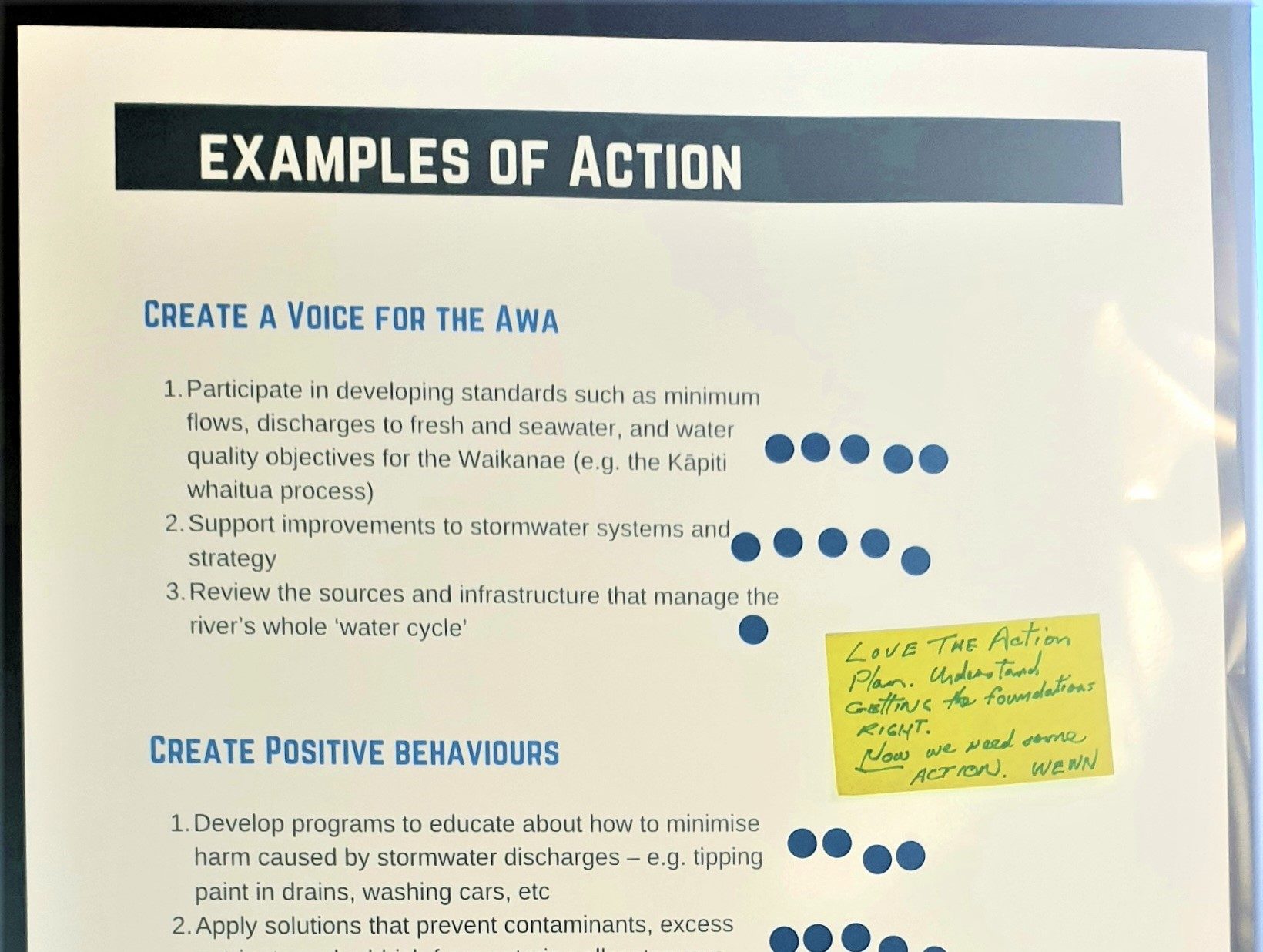To help understanding of what the proposed values and priority objectives could mean in practice, here are some examples of action that could be taken for the Waikanae Awa.
At this stage, these action ideas are indicative only. We are not formally proposing them, but we hope that they will provide a flavour of the types of action we think are needed.
These action ideas are listed according to types of action, but, of course, many of these ideas could fit under more than one type.
Create understanding of our impact
- Provide a clear ‘mountains to sea’ view of key sites and issues for the Awa
- Improve our understanding of the overall impact of discharges and take from the Awa
(the volumes permitted for abstraction, the ability to use groundwater at times of low flow to both reduce and augment river take (and its clear benefit for the natural river environment), and the increasing concern for increased nitrogen and phosphorous contamination of the lower reaches of the river from treated effluent)
Create Connection
- Protect and preserve sacred sites of significance along the Awa
- Start an annual Awa festival in accordance with seasonal, local Mātauranga Māori and upholding Tikanga-ā-Iwi traditional practices
- Create opportunities for rangatahi to connect with their whakapapa by the Awa
- Catalyse new communication and sharing of information about the Awa
- Develop a track from mountains to the sea to give a full experience of the Awa
- Ensure kohanga reo and schools have an Enviro-Schools or equivalent programme that focus on different aspects of the Awa
Create new insights
- Develop the first coordinated monitoring programme for the Awa, including building on existing iwi monitoring
- Facilitate citizen science projects that build on the existing data
Create a Voice for the Awa
- Participate in developing standards such as minimum flows, discharges to fresh and seawater, and water quality objectives for the Waikanae (e.g. the Kāpiti whaitua process)
- Support improvements to stormwater systems and strategy
- Review the sources and infrastructure that manage the river’s whole ‘water cycle’
Revitalise Habitat
- Support catchment-wide plant and animal pest management strategies (e.g. With Waikanae Jobs for Nature)
- Create opportunities for restoration groups to communicate and coordinate with each other and the wider revitalisation effort
- Protect, maintain and enhance all mahinga kai opportunities which includes places, species and activities associated with cultural harvest including through reseeding stocks
- Identify a set of Waikanae ‘taonga’ to focus action on
- Assess opportunities to protect, maintain and create ecological connectivity – e.g. riparian vegetation
Positive behaviours
- Develop programs to educate about how to minimise harm caused by stormwater discharges – e.g. tipping paint in drains, washing cars, etc
- Apply solutions that prevent contaminants, excess nutrients and rubbish from entering all waterways
- Identify opportunities to prevent activities that cause erosion and sediment entering our waterways.

